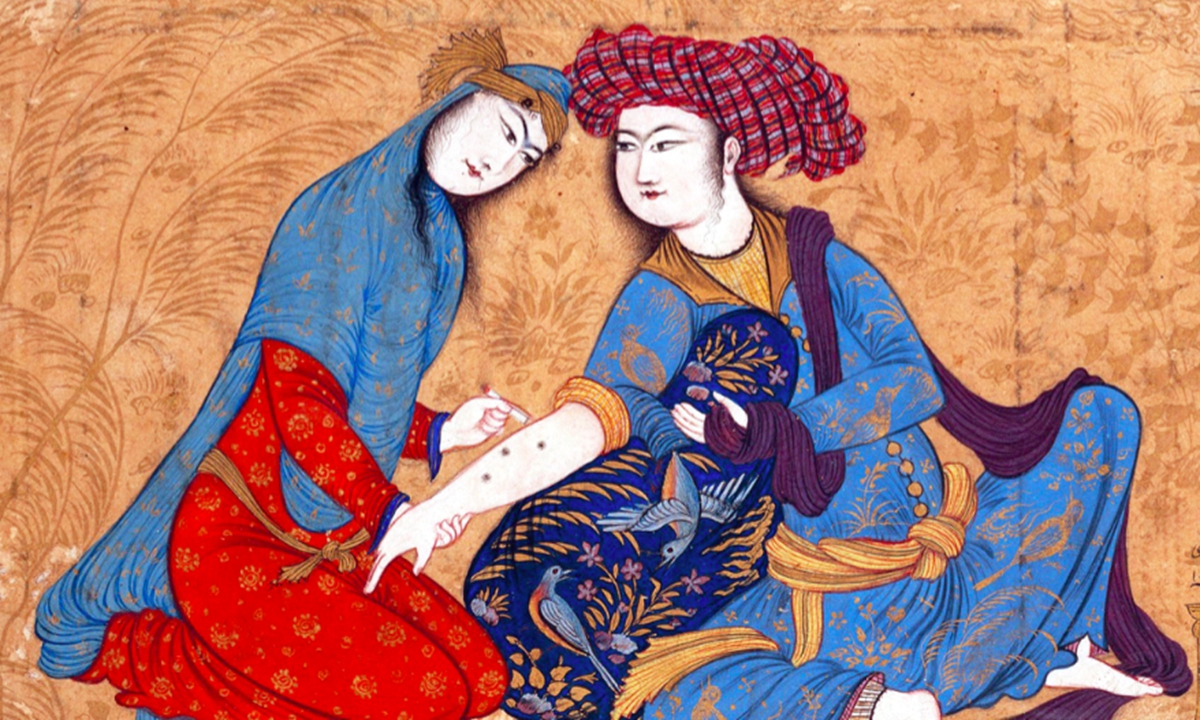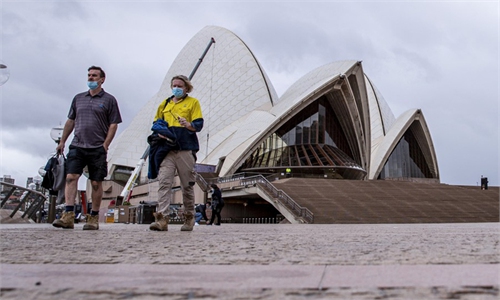ARTS / ART
Iran’s ‘Gongbi’ drawing exhibited in Shanghai to celebrate anniversary of China-Iran diplomatic ties

Iranian miniature painting called Lovers by artist Afzal Al-Husayni Photo: Courtesy of Shanghai Art Collection Museum
Persian Treasure, an art exhibition displaying exquisite Iranian miniature paintings that carries similarities to Chinese fine brush painting, also known as the "Gongbi" drawing has recently been launched in Shanghai to celebrate the 50th anniversary of the establishment of the diplomatic relations between China and Iran.Miniature painting is an artistic legacy that has been registered on the UNESCO World Cultural Heritage list. What some people may not know- is that this art form was inspired by Chinese art.
"It carries similarities to Chinese fine brush painting, especially after the 13th century when the art form was hugely influenced by China. The painting style grew gradually different from that of other Islamic countries as they began to absorb some methods of Chinese painting and pay attention to brush movement and landscape paintings with Chinese characteristics," Zhang, an art insider who worked on the exhibition, told the Global Times.
The exhibition at the Shanghai Art Collection Museum celebrates the long-lasting cultural exchanges between China and Iran and also marks the 50 years of friendship between the two countries.
"It can be said that the time after the Tang Dynasty (618-907) was an important period for China-Iran cultural exchanges. During this period, many Chinese scholars, officials and craftsmen went to Iran with the Mongolian rulers, bringing China's unique culture there," added Zhang.
The exhibition gathers more than 100 miniature paintings that touch upon subjects such as Persian folklore and poetry, which has been loved and appreciated by Persians for thousands of years.
Highlights of the exhibition include a miniature painting called Lovers by artist Afzal Al-Husayni, often called the last great master of Persian miniature paintings. It portrays a woman burning "love marks" on her lover's arm. At the time, these marks were a sign of affection.
The two figures, symbolizing passion for life, pop out from the golden foliage in the background to show a poetic interpretation of people's daily life. The painting was a huge inspiration for Persian miniature paintings.
Various miniature calligraphy works of Iranian poems are also on display at the exhibition, taking audiences back to the "Persian Renaissance" during the 11th to 15th centuries, often seen as the golden age of Persian poetry.
While the origins of Persian miniature paintings remain to be explored, they were commonly used as illustrations in books. In Chinese it is called "Ximi" painting, which means "delicate and dense," referring to the art form's characteristic style.



